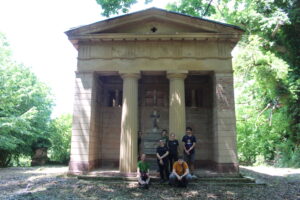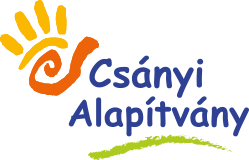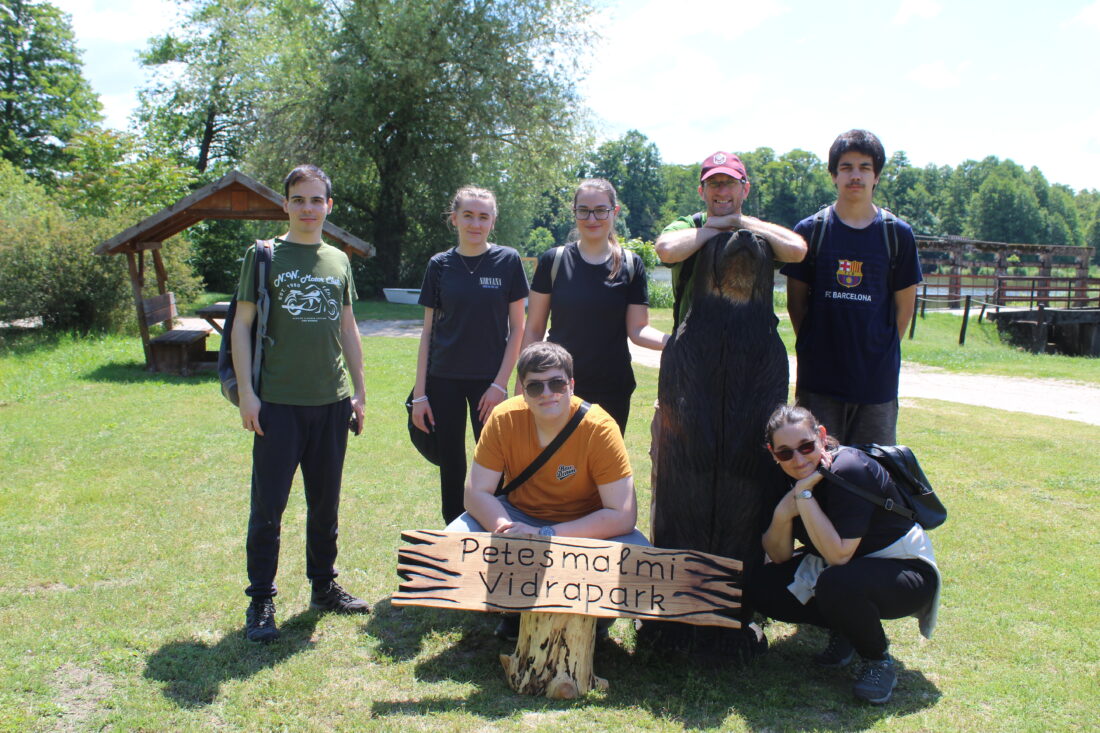
A Fast-Paced End to the School Year in Kaposvár
The last week of May was a real sprint for our group. On Tuesday, we took the final exam for our ICDL certificate – the last module focused on website editing, which required our full attention. Still, we overcame the challenges, and everyone passed the test successfully.
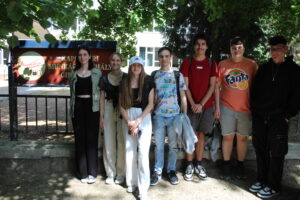
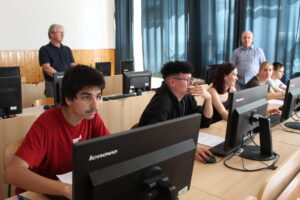
On Friday afternoon, we had our final reading comprehension session, led by Teacher Gombos. Throughout the year, thanks to Béla Vikár, the renowned folk tale collector from Somogy, we explored the world of fairy tales. This final session was a comprehensive discussion about the tale as a literary genre—presented in the usual engaging, high-quality, and humor-filled style we’ve come to expect from “Peti bácsi.”
We had a long debate about what dragons look like in Hungarian folk tales. What color are they? Can they breathe fire? How many heads do they have? Can they fly? (And how, with that many heads?) What do they do? What do they guard? Are they just security guards, really? And why are they even there, since they don’t seem to go well with princesses—so what’s their purpose?
(If you’re curious about the answers: there’s no fixed color for dragons—except in Chinese tales, where they’re red. Ours don’t breathe fire. The number of heads is always a multiple of three—thanks to Elek Benedek, we even have a seven-headed one. And thanks to Süsü for being the one-headed exception, though he doesn’t exactly belong to the folk tale genre. By the way, kudos to Benedek Elek also for standardizing the phrase “once upon a time,” even though real folk tales don’t typically start that way.)
We had never thought about these questions before—but since folk tales have occasionally come up in the final high school exams in recent years, it’s worth weaving some scientifically grounded facts into an analytical essay on the topic. That’s why I found this session especially useful. Once again, Peti bácsi shared many fascinating insights. As always, I thoroughly enjoyed learning about tales—their origins, typical literary features, and other tale collectors beyond Vikár Béla.
Even though we might feel we’ve “outgrown” this genre, by the end of the session, I didn’t think so at all. As I said when we wrapped up: “A tale is stress relief for the young, rejuvenation for the old, and stand-up comedy for the soul.”

On Saturday, we wrapped up another project with the Hiking Club. This time, we visited Petesmalom, one of the historic mills of Somogy. This inner-Somogy region is among the most sparsely populated in the county due to its poor, sandy soil, which is unsuitable for agriculture. The Rinya stream once had a wide floodplain, and the Korokna stream frequently flooded, so our ancestors regulated the water by creating fish ponds—providing both livelihood and flood control.
Máté Varga once again shared great stories with us. We learned that artifacts from the time of the Hungarian Conquest have been found here—such as iron vessels. According to Máté, our ancestors accessed iron ore after draining or drying the lakes.
Petesmalom used to operate between the villages of Lábod and Mike, but today only ruins remain. Now, the area—divided by ponds—serves as a wildlife rescue center and is home to one of Hungary’s most famous otter parks. We even got to watch the animals being fed. On the nature trail, we observed swans swimming with their cygnets, and wild ducks, grey herons, and black storks clearly felt at home.
Our tour continued in nearby Mike, where two mills once operated. Sadly, both have since disappeared, though one is still remembered in the name of a village street.
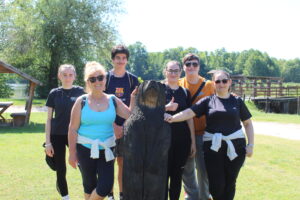
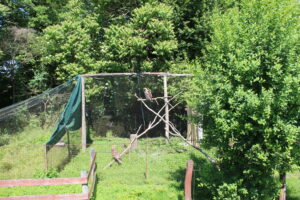
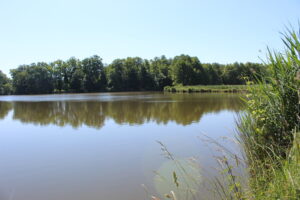
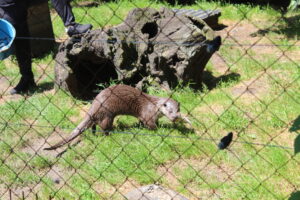
The name Somssich is well-known to us. This time, we learned about Pongrác, a member of the distinguished family. A wealthy landowner, he often hosted Count Széchenyi, but his strong pro-Austrian stance led to serious conflicts with other family members. His tragic death came at the hands of a sick Austrian soldier—an odd twist of fate. Like many other noble residences in Somogy, the Somssich mansion now stands abandoned and in a terrible state—a sad monument to a bygone era. Still, the centuries-old trees in its park and the artificial ponds created by the family continue to amaze visitors.
We don’t plan to end our “Waters of Somogy” project here—next year, to be continued with the Dráva region and more adventures along the Kapos River.
You can find photos from our trip in the Gallery.
Levente Sipos
Kaposvár – Group 2
